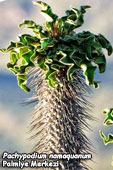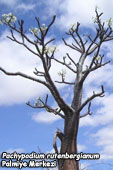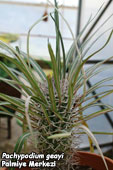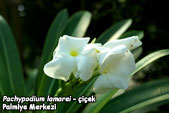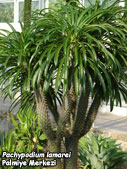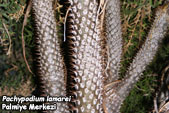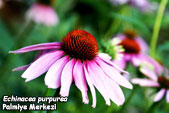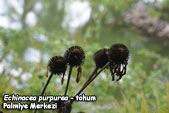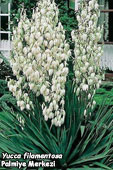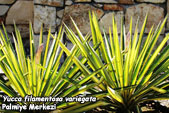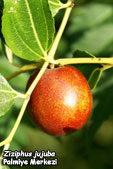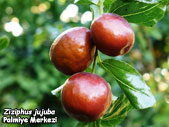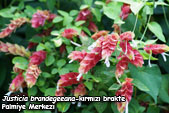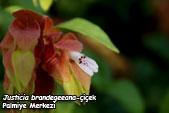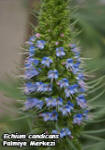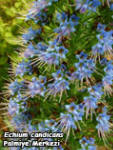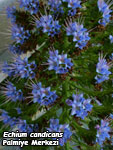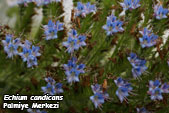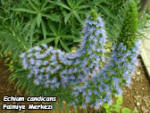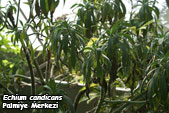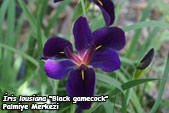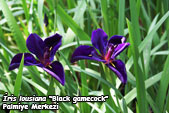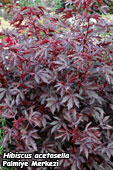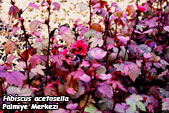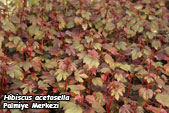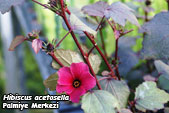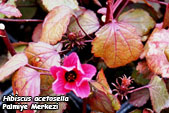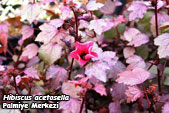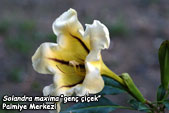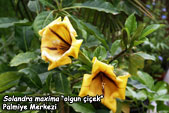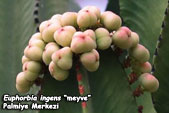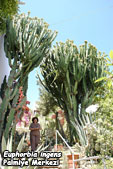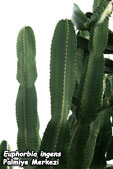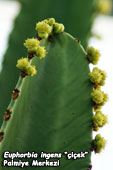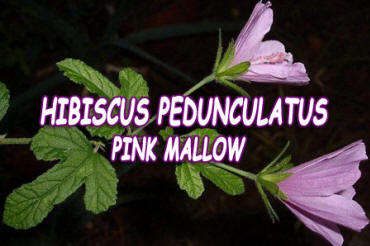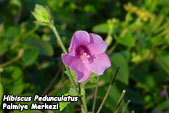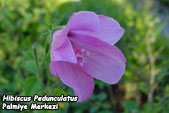 |
| |
|
|
|
If you wish this
program to be sent to your or your friends’ e-mail address,
please get a subscription (totally free of charge, and no
advertisements will be sent). I would like to get a subscription to “The Fourth Dimension in Landscape Design”>>>>>>> |
PEYZAJDA 4. BOYUT December 2013
 |
|
Pachypodiums are members of the Apocynaceae family which also includes Adeniums, Oleanders, Plumeria and Periwinkles. Pachypodium genus contain 25 species, from mostly arid regions of Namibia, Zimbabwe, Boswana, Angola, South Africa and Madagascar. Pachypodium means ‘thick foot', referring to the large, swollen caudiciform stems all members of this genus have. They have succulent stems and most are heavily armed with thick, stiff spines on the caudex and branches. Leaves are only present on the top of the caudex or near the ends of each branch. The palm-like look of some species is where the name Madagascar Palm comes from. The flowers of the genus are simple, star shaped and somewhat similar to Plumeria or Oleander flowers and some fragrant. In general the Madagascar Palms are easy plants to grow indoors, and even easier outdoors in the warm and dry climates. Some Pachypodiums even do well in warm and humid climates like Pachypodium lamerei and P.rutenbergianum. Pachypodiums are summer growers, they are fully leaved and growing the most vigorously at summer and autumn. Most species are deciduous and lose their leaves in winter. They do not need water in winter. Soils have to be very well draining or these plants will rot if kept wet too long in poorly draining soils. Madagascar Palms are full sun plants in the wild demanding of high light situations and suffer in dark, shady locations. Pachypodiums are not cold tolerant plants. Pachypodium lamerei, P. geayi, P. lealii and P. succulentum are the most likely species to do well outdoors. Most other species are usually grown in pots. Frosts down to -3°C or below will usually cause severe damage to the trunk. Fertilizer is not usually needed if one is going to repot their plants every 2-3 years. It is recommended to use a standard fertilizer that has even quantities of all three major nutrients. PACHYPODIUM LAMEREI is the most commonly grown Pachypodium in cultivation and the one most refer to as the Madagascar Palm. It is one of the faster growing species, obtaining heights around 600 cm in its native southern Madagascar and is a thick-trunked, intensely spiny tree with some branches. The spines are usually about 2-3 cm long, fairly sharp. The leaves are lancelote and bright green with a pale yellow midrib. Branching usually occurs as a result of injury like trauma, frost damage, insect damage etc. Flowers occur usually in early summer and are white with yellow centers and smell very nice. It is one of the easiest succulents to grow, both in the ground and in a pot. Pachypodium lamerei also do well in humid climates. PACHYPODIUM GEAYI is also called the Madagascar Palm, and is also from Southern Madagascar, though from a more arid climate zone there. In general appearance it is somewhat similar to Pachypodium lamerei, but tends to be more robust and taller. The primary difference between the two is this species has thinner, greyer-green leaves that are less shiny and have a reddish midrib. This plant prefers a drier climate, not the humid ones Pachypodium lamerei seems to prefer. PACHYPODIUM RUTENBERGIANUM is the largest and fastest growing Pachypodium, can reach 900 cm. high. But it is also a bit less hardy and touchier. Flowers are white with pale yellow centers, but seem to form while leafless in winter, instead of in summer like the above two. PACHYPODIUM NAMAQUANUM is the largest of the species and the one originally referred to as Halfmens. In Africa these plants can grow as tall as 300-400 cm, but they are pretty slow growing even there. In cultivation they rarely get taller than 100-120 cm. Branching is rare and few plants have more than 2-4 branches. The leaves are pale green and characteristically fuzzy with curious undulating margins. Flowers are deep red color and form at the top, center of each stem in tight bunches. Old plants are wonderfully impressive landscape specimens, most grow this species in pots. PACHYPODIUM SAUNDERSII can reach 120 cm height. It is a highly branched plant eventually forming an irregular and somewhat awkward looking shrub. Flowers are white in the late summer to autumn. Plants as young as 4 years can flower. PACHYPODIUM LEALII the leaves are less shiny, to nearly fuzzy. This species is a bit less branched, but similar in overall shape to Pachypodium saundersii. The flowers have distinct pink throats. Cold hardiness is pretty good down to about -3°C. PACHYPODIUM SUCCULENTUM this is probably one of the ‘hardy' Pachypodiums, that at least can be grown reliably in the ground of warm temperate climate zones. It is nearly a geophyte with its huge, bulbous caudiciform roots being all underground in nature. However, in cultivation most grown with the majority of roots above ground for effect. Flowers are in late spring to early summer and are tiny, white with pink midribs. There are about 18 other species of Pachypodium, all worthy of pot culture as most are wonderfully ornamental caudiciform plants. If you wish more information for Pachypodiums: refer to Geoff Stein’s excelent article at Dave’s Garden>>> http://davesgarden.com/guides/articles/view/539/ |
PEYZAJDA 4. BOYUT November 2013
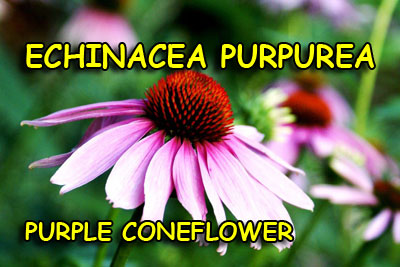 |
|
Echinacea is a genus containing 9 plants, belong to daisy family Astraceae. This nine species are commonly called Coneflowers. They are endemic to eastern and central North America, where they are found growing in moist to dry prairies and open wooded areas. They have large, showy heads of composite flowers, blooming from early to late summer. The generic name is rooted in the Greek word echino, meaning "sea urchin," due to the spiny central disk. The common name "cone flower" comes from the characteristic center “cone” at the center of the flower. Some species are used in herbal medicines and some are cultivated in gardens for their showy flowers. Echinacea purpurea is belong to genus Echinacea of the daisy family Asteraceae. The specific epithet purpurea refers to the purple colour of the flowers. Its cone-shaped flowering heads are generally, purple in the wild. Native to North America, Purple Coneflower is found from the states of Georgia to Louisiana and Oklahoma and northwards to Virginia, Ohio, Michigan, Illinois, Iowa and Missouri. It inhabits rocky, open woodlands and prairies and is sometimes found on wetter soils adjacent to rivers and streams. Echinacea purpurea is a rhizometous (underground stem), perennial herb, growing up to 150 cm tall by 50 cm wide at maturity. Above ground it has rough stems, which often branch near the top and bear soft, short hairs. Leaves arise from the base of the stem and are 15×10 cm with coarsely, irregularly toothed margins. The flower heads are up to 15 cm in diameter. Purple Coneflower’s flower heads have, typically 200-300 fertile, bisexual disc florets but some have more. The central disc-florets are orange. The outer, sterile, florets are red-purple with green tips and 3–8 cm long. It is pollinated by butterflies and bees. Although the plant prefers loamy or sandy, well-drained soils, it is little affected by the soil's pH. The corollas are pinkish, greenish, reddish-purple or yellow and have tubes shorter than the throats. Depending on the climate, it blooms throughout spring and summer. Best flower display is late June to late July, with sporadic continued bloom into autumn. Echinacea purpurea easily grown in average, dry to medium, well-drained soil in full sun to part shade. An adaptable plant that is tolerant of drought, heat, humidity and poor soil. Divide clumps when they become overcrowded (about every 3-4 years). Plants usually rebloom without deadheading, however prompt removal of spent flowers improves general appearance. Purple Coneflower can be propagated either vegetatively or from seeds. Useful vegetative techniques include division, root cuttings, and basal cuttings. Clumps can be divided, or broken into smaller bunches, which is normally done in the spring or autumn. Cuttings made from roots that are 0,5 cm, will develop into plants when started in late autumn or early winter. Cuttings of basal shoots in the spring may be rooted when treated with rooting hormones. Use in Landscape: Echinacea purpurea excellent, long-blooming flower for massing in the border, meadow, native plant garden, naturalized area, wildflower garden or part shade area of woodland garden. Often massed with black-eyed Susans (rudbeckias). Purple Coneflower grown as an ornamental plant, and numerous cultivars have been developed for flower quality and plant form. Cultivated as an ornamental in temperate areas, Echinacea purpurea is also grown for cut flowers by those who appreciate its large, late summer daisies with their prominent, orange cone. Although E. angustifolia was the most widely used medicinal plant by the Native Americans, the rhizome of Echinacea purpurea has also been employed in Native American medicine. Medicines made using Echinacea species have been shown to have antiviral effects and to stimulate the production of white blood-cells and are marketed as products to relieve the symptoms of colds and to aid wound-healing. The fresh juice of the above-ground parts of Purple Coneflower, has also been approved in Germany for use in restoring damaged tissue and for assisting the human body in fighting infection. |
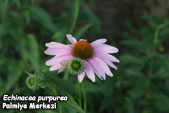 |
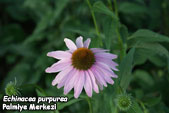 |
|
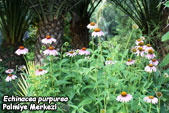 |
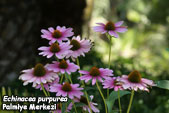 |
PEYZAJDA 4. BOYUT October 2013
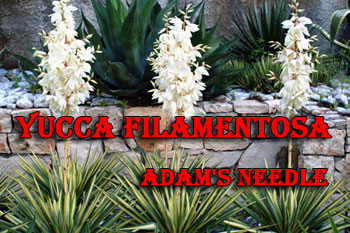 |
|
Yuccas are belong to Asparagaceae family. They can be evergreen perennials, shrubs or trees, with dense or loose rosettes of stiff, sword-shaped leaves and tall panicles of bell-shaped flowers. Adam’s Needle (also commonly called Spanish bayonet or Needle Palm) is a small, stemless, evergreen shrub forming clumps of sword-shaped, deep green leaves to 75cm in length, edged with curly filaments. Yucca filamentosa is native to the southeastern United States as far west as Louisiana and as far north as Virginia south to Florida and Mississippi. Because of its cold hardiness and adaptability, make it popular around the world. Each summer it produces a tall flower stalk up to 200 cm, covered in creamy white blossoms 6 cm in length are borne in panicles. The sword-like leaves produce white threads along the edges, thus the specific name. It should be planted in full sun, as the Adam’s Needle will not bloom in shady conditions. It works great in rock gardens and island beds since the pointed foliage isn't conducive to high traffic areas. Reliably hardy to -40°C as long as boggy conditions are avoided. It is happiest in well-drained soil with normal moisture, but adapts to a wide range of soils and conditions. Tolerant of poor, sandy soils and drought. Also shows surprising tolerance for some part shade. The leaves of Yucca filamentosa are long, narrow, and strap-like. Leaves are spine tipped with numerous long, curly, fibrous threads peeling back along the margins. Fibers of this species can be used to make rope, rough textiles, and paint brushes. The thickened root, a rhizome, can be beaten into a lathery pulp which can be used for soap and shampoo. Flowers have six white tepals and male and female reproductive organs, but cross pollination is required for fruit production. If flowers are pollinated, seed-filled capsules develop. Adam’s Needle dies after flowering and fruiting, but produces offshoots that develop into new plants at the base of the mother plant. Use in Landscapes: Yucca filamentosa used in borders, dry garden areas, specially dry slopes, and rock gardens. Adds architectural value to the planted areas. Interest in yuccas for the home garden has been somewhat tempered in recent years by a proliferation of commercial plantings in such areas as parking shopping centers and restaurants. |
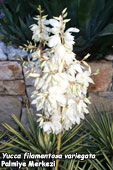 |
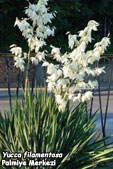 |
|
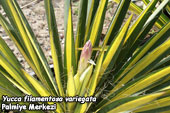 |
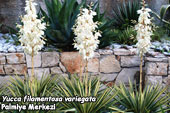 |
PEYZAJDA 4. BOYUT September 2013
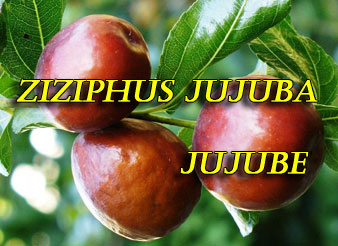 |
|
ZIZIPHUS JUJUBA, (Ziziphus zizyphus, Ziziphus sativa, Ziziphus vulgaris) JUJUBE - CHINESE DATE JUJUBE Ziziphus jujuba is belong to Rhamnaceae family. Jujube a deciduous fruit tree or large shrub, that is relatively easy to grow in warm climates. Ziziphus jujuba is probably native from Middle East to China. It has been used in China more than tousands of years. Mature trees are hardy to -20°C, but young trees, need to be protected. Jujube is an interesting tree with spiny, gnarled branches and an open, irregular form. Ziziphus jujuba can reach up to 8-10 metres in height with a spread of 5-8 meters. It can be trained to a single trunk. Most unpruned plants grow with several trunks. The mottled gray-black bark is rough and shaggy. The ovate, shiny, green, alternate leaves are 2-6 cm long, have paler underside. Autumn color is often a showy yellow. There are sharp spines at the base of each leaf. In spring, small clusters of yellow or white, fragrant blossoms appear, hidden in foliage between the leaf and stems. The green oval, round fruits is 2-4 cm long. The smooth-green fruit darkens as it matures, first to red then purplish-black and wrinkled. At the end it become a sweet, dried, wrinkled fruit, hence the common name Chinese date. Sweet fruits are eaten either fresh, candied, or dried like dates. Young, two-year-old trees are able to produce fruits. Jujube tolerates all kind of soils and also is very tolerant to drought. It should be grown in full sun or partial shade. Ziziphus jujuba seem to have very few insect problems. It should be fertilized two to three times a year with a complete fertilizer for good growth and fruitings. Often trees will bloom again during the late summer or early autumn and have a second crop during autumn as well. Jujube trees can be propagated by seeds, or dividing offsets. However, seedlings take several years to start fruit production. Grafted plants are less thorny than seedlings. Ziziphus jujuba is grown all parts of temparete climates. Jujube is the most common fruit tree in China. In India, the tree is held sacred and included in many religious ceremonies. The fruits are offered to Siva. Use in Landscapes: Ziziphus jujuba is not an accent tree and not used as a landscape tree. But it can be used to create a high hedge or as fruit tree, in fruit gardens. Jujube have flavor somewhat resembling that of a green apple. Older fruits which have been allowed to sit for a few days before being eaten, often will have a flavor almost like a date. The pulp is eaten cooked with sugar and the kernel is eaten raw. In India the wild fruit is mostly used for making sherbert. Young leaves are cooked and eaten in Indonesia. In Venezuela, a jujube liqueur is made. In China, jujubes are eaten fresh, dried, smoked, pickled, candied. It can be frozen for long periods without any deterioration of quality. The Jujube is an important tree in the dry regions as it grows readily and quickly on poor ground, furnishes good timber, excellent fuel, material for fencing in its branches, fodder for camels and goats and fruit for man. Different parts of the plant have various medicinal use. The fruits are applied on cuts and ulcers. The dried ripe fruit is a mild laxative. The seeds are sedative: nausea, vomiting, and abdominal pains in pregnancy. Mixed with oil, they are rubbed on rheumatic areas. The leaves are applied as poultices and are helpful in liver troubles, asthma and fever. The bitter, astringent bark decoction is taken to halt diarrhea and dysentery. The bark paste is applied on sores. The root is purgative. |
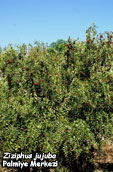 |
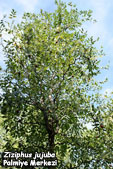 |
|
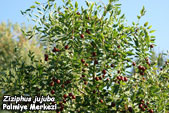 |
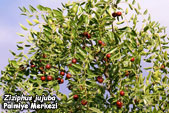 |
PEYZAJDA 4. BOYUT August 2013
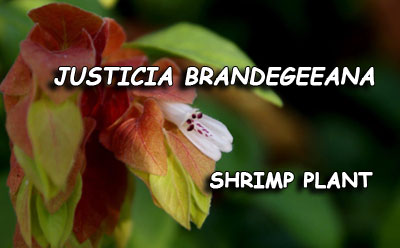 |
|
Justicia brandegeeana is an evergreen shrub in the genus Justicia of the family Acanthaceae. Justicia genus contains over 400 tropical species and was named after James Justice, a Scots gardener and author of a 1754 book, British Gardener's Directory. Shrimp Plant is native to Mexico, and also naturalized in Florida. The species is named after the American botanist Townshend Brandegee. It is easy to grow. The exotic, interesting flowers bloom continuously in frost-free areas. It is not bothered by pests. Justicia brandegeeana in clumps of delicate, twiggy stems that grow up to 120 cm tall by 60–80 cm wide. Shrimp Plant is evergreen in mild climates, and blooms almost continuously. The leaves are oval, green, 3-6 cm long. The flowers are white, extending from red bracts a bit like a shrimp, where the shrub's common name came. The branching stems are tipped by 15 cm drooping spikes of dark red to rusty brown bracts, each bract enclosing a tongue like white flower. The stems and leaves are downy.The bracts start out white, but with sun exposure they turn anywhere from pale pink to deep salmon. Flowers emerge from the bracts; usually they are long, thin, and white with speckled maroon throats. The flowers attract hummingbirds and butterflies. Justicia brandegeeana thrives in the shade in tropical areas. It does best in well-drained sandy, fertile soil, but is generally low maintenance and drought-tolerant. It is best grown under glass in cooler areas, as a house pot plant, owing to its ability to tolerate low light and some neglect. Shrimp Plant should be watered well generously in hot weather to keep plant looking fresh. It is killed to the ground by frost but usually recovers quickly when warm weather returns. The shape is generally long and spindly. If trimmed back regularly, it can maintain a bushy habit and will not need support. If the branches are allowed to grow long, they will become unable to support themselves and bend towards the ground. Justicia brandegeeana’s many cultivars are available, with different flower bract colors, including yellow, pink, green and dark brick-red. It can be propagated by stem cuttings in spring or by division of clumps. USE IN LANDSCAPES: Shrimp Plant may be used in mixed perennial beds and borders, wherever a mass of continuous color wanted. They bloom almost all year long in warm climates. Also it is a great subtropical plant for sheltered locations and on the coast. Makes fine foundation planting under arbors and awnings. Bushes tip should be pruned to promote bushiness and increase flowering. In cool climates, shrimp plant is grown in a container, and to be brought indoors in winter. |
 |
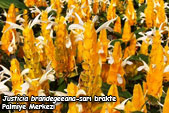 |
|
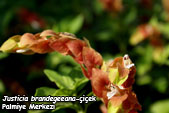 |
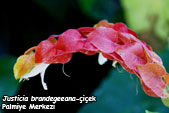 |
PEYZAJDA 4. BOYUT July 2013
 |
|
The genus Plumbago is belong to Plumbaginaeae family, it is comprises 10 species from the warmer parts of the world. There are 5 species in South Africa. Plumbago auriculata is a shrub, native to South Africa. Mainly found in Cape region and shares a habitat with Tecomaria capensis (Cape Honeysuckle). Plumbago auriculata was known as Plumbago capensis, which was the name given by Thunberg in 1794. However, the plant had already been named auriculata by Lamarck in 1786 in what was known as the East Indies where it had been taken as a garden plant. The Dutch East India Company trade routes included the Cape and this was most likely how the plant reached the East Indies. The name Plumbago is derived from plumbum meaning lead, referring it is supposed to cure for lead poisoning. Auriculata means ear shaped and refers to the leaf base. In nature Cape Leadwort is a scrambling shrub, reach 300cm x 300cm. The new growth is bright green, darker when mature. The leaves are thin in texture and have minute gland dots. Underneath the leaves are greyish green. In summer Plumbago auriculata is covered with lovely pale sky blue flowers. Although main flowering period is between May and October there are often flowers at other times of the year. There is also a white form which is very attractive. It is slightly less vigorous than the normal blue but is a prolific flowerer. Use in landscape: Cape Leadwort is an extremely reliable, resilient plant which has been popular for home gardens as well as for commercial landscapes for many years. Plumbago auriculata may be found in gardens all over the world, and was apparently popular as a standard plant in Europe. Cape Leadwort makes a very good informal or formal hedge as it responds well to pruning. It will flower profusely after being cut back or after a growth flush, as it bears flowers on new wood. It may need to be cut back after winter to keep it tidy. Plumbago auriculata will scramble into trees if allowed. It is very useful in large gardens and landscapes as it forms suckers and will cover fairly big areas. Cape Leadwort is fast growing, drought resistant, rewarding plant and will grow in any soil but will perform best if planted with plenty of compost. Although somewhat frost tender, it will quickly re-grow if damaged. It is propagated easily from seed, cuttings and suckers. The easiest method of propagation is to remove rooted suckers from the mother plant. Plumbago auriculata is used traditionally to treat warts, broken bones and wounds. It is taken as a snuff for headaches and as an emetic to dispel bad |
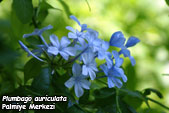 |
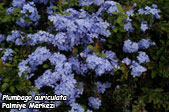 |
|
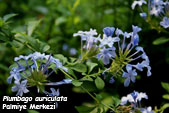 |
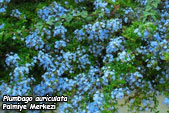 |
PEYZAJDA 4. BOYUT June 2013
 |
|
Echiums are belong to Boraginaceae family. Indigenous to the Mediterranean, Canary Islands, Maderia and western Europe. There are about 40 members of the genus. Echium can be annuals, biennials, evergreen perennials or shrubs, with simple, coarsely hairy leaves and funnel-shaped flowers borne in panicles or dense spikes in summer. Echium candicans synonym is Echium fastuosum is a soft wooded shrub. It is also called Pride of Madeira. Maderia island is a Portuguese archipelago in the Atlantic Ocean. While it is endemic to the islands, it is also found in Canary islands naturally. Echium candicans is also naturalized and offered commercially world-wide. Pride of Madeira is a short lived, ever green perennial. Ultimate height and spread are up to 250cm. Green grey leaves are oleander shape, up to 10cm long, they clustered in large rosettes at the branch ends. In spring and summer, it produced up to 60cm long spires of sapphire-blue to violet-blue flowers with crimson stamens are produced. Each flower is only 10mm long, but borne hundreds together. Echium candicans is a frost sensitive plant, can withstant only short periods of light freze. It is salt and dry tolerant. Outdoors, grow in moderately fertile, well-drained soil in full sun. Protect from winter frost in situ with horticultural fleece. It likes alkaline or neutral soil. USE IN LANDSCAPE: Pride of Madeira is especially suited for xeriscape plantings and tends to be happiest in dry, rocky soil, baked by the sun. As long as it is protected from freezing temperatures and damp conditions, it will multiply happily and put on a tremendous show of the striking candelabra blossoms so many gardeners love. If there is danger of frost, Echium candicans could be kept as a pot plant with occasional pruning and taken indoor in cold season. As attractive to bees and butterflies, Pride of Madeira is a big favorite in butterfly and hummingbird gardens. |
PEYZAJDA 4. BOYUT May 2013
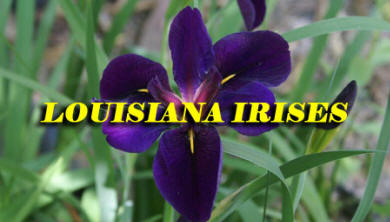 |
|
In Greek mythology Iris is the name of the Goddess of the Rainbow, surely one of the best God on Olympus. Because of the great elegance of the Iris bloom, it has been the symbol of monarchs and royal families throughout history. Louisiana irises are indigenous to the south central Louisiana gulf coast and inland marshes. They are all related, in being members of the same series, Hexagonae, within the Genus Iris. They are: Iris brevicaulis, Iris fulva, Iris hexagona, Iris giganticaerulea and Iris nelsonii. In the years after the 1920s when these irises were discovered, botanists systematically searched for "new" irises that might be additional species. Many differing colors and forms were found and named as species, but most turned out to be natural hybrids, mainly of Iris fulva and Iris giganticaerulea origins. The currently recognized species Iris hexagona, Iris giganticaerulea and Iris brevicaulis consist of irises in the blue-purple range with occasional white forms found. Iris fulva and Iris nelsonii consist of irises in the red and yellow. Iris louisiana 'Black Gamecock' hybridized by Chowning and registered in 1978 also it is the winner of the AIS Award in 1986. It has wonderful velvety, deep royal-purple 10 cm long flowers with a gold signal at the center. This herbaceous plant is probably the most famous of the Louisiana irises. This hybrid iris displays beautiful 50-80cm green strap leaves and spring-blooming dark purple flowers with a gold signal. Iris louisiana 'Black Gamecock' prefers full sun but will flower well even in light shade. It prefers rich, moist soil for best growth but is also quite adaptable to any other rich soil. Very high moisture needs; suitable for bogs and water gardens, prefer pH 5,5-6,5. Can become chlorotic in alkaline conditions. Because of their high moisture needs, it is recommended that they are not allowed to dry out between waterings. It is hardy to -10°C. Parts of plant are poisonous if ingested. Handling plant may cause skin irritation or allergic reaction. Propagation is done by dividing rhizomes or offsets. Use In Landscape: The Louisiana Iris planted in groups using 3–9 plants together, will spread to form a colony and are great in combination with other moisture loving Iris (I.pseudocorus, I.xanthospuria) Lobelia (Lobelia cardinalis), Water Canna (Thalia dealbata), Pickerel weed (Pontaderia cordata), Papyrus (Cyperus papyrus) It can also be used as a container plant. Great for cut flowers as flowers can last 7 to 10 days. |
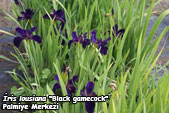 |
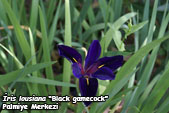 |
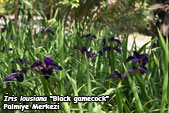 |
PEYZAJDA 4. BOYUT April 2013
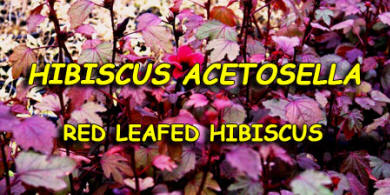 |
Hibiscus is a large genus of over 200 shrubs, trees, annuals and perennials. Many of the hibiscus are tropical and exotic with colorful, large flowers. All Hibiscus plants are belong to Malvaceae family.Hibiscus acetosella is a short lived shrub or woody perennial, grown mainly for its striking color of foliage. The foliage shades of copper and burgundy that rival red maples. The flowers and leaves are edible, with a pleasant tart taste. In its native Angola, Red Leafed Hibiscus grows as an herbaceous perennial found along roadsides and in the clearings around native habitation. Also it was cultivated and eaten as a spinach-like green. It can also be eaten in mixed salads. The Latin epitaph is from an old name for sorrel (Oxalis) because the foliage of this hibiscus is somewhat sour to the taste.
Hibiscus acetosella needs fairly low maintenance. Their biggest need is water. Plants should be kept moist, but not allowed them to sit in wet soil. Container plants will need daily watering. Red Leafed Hibiscus is not frost hardy, so must be kept indoors at cold areas in winter. One can also take small cuttings in the fall, to overwinter for next spring. Though this hibiscus is grown as an annual in temperate climates, it will thrive at warm climate for several years in full sun or partial shade with regular watering. Hibiscus acetosella grows best when protected from strong, drying winds and salt spray in a fertile and somewhat moist soil. Red Leafed Hibiscus is easily grown from seed or cuttings as an annual to supply beautiful palmate leaves reminiscent of a Japanese maple.
The shrubby habit of this plant makes it a good choice for a seasonal hedge, an attractive annual specimen plant, or for contrast in the mixed border or cottage garden. It looks particularly nice with the silver foliage plants like Senecio maritima. Combine darker purple-red types with pink flowers, such as pentas, zinnias or Verbena bonariensis. Plant it in combination with large-leaves plants, like bananas or cannas, for a tropical look. They look wonderful in contrast with ornamental grasses and could even be used in a large container. Though the flowers only last a day, flower arrangers often use branches from the Hibiscus acetosella for the deep red color and texture of the leaves that resemble those of the Japanese maple. The area beneath the flower called the calyx, which remains after the blossom fades, also adds interest to an arrangement. |
PEYZAJDA 4. BOYUT March 2013
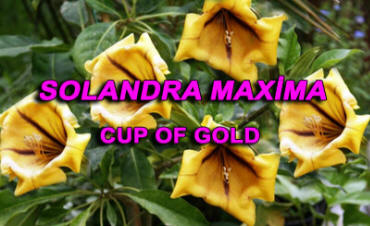 |
|
Solandra is a genus of eight species of flowering plants, called Chalice Vines. They are native to Mexico, West Indies and northern South America. Solandras are woody stemmed evergreen, scrambling climbers and belong to Solanaceae family. Solandra is named after the Swedish naturalist Daniel C. Solander. Solandra maxima naturaly found at Mexico to Colombia, Venezuela. Cup of Gold, is a heavy, thick stemmed tropical liana with large shiny leaves and large bell shaped golden yellow flowers. The thick and woody rope like stems branch frequently and root at their nodes, and can run up to 50 meters. Clinging with aerial rootlets and scrambling over everything in the way. Solandra maxima is an evergreen plant and its elliptic leaves, up to 15cm long and 7cm wide, with prominent lighter colored midribs and lateral veins. The marvellous flowers shaped like a chalice, up to 20-25cm long. The five lobes of the corolla are reflexed, and each lobe is marked with a narrow maroon ridge on the inside. The flowers start out pale yellow with maroon veins and turn deeper gold yellow as they age. Flowers are fragrant, especially at night, with a scent resemble to coconuts. Cup of Gold blooms intermittently through the year, but mainly in the winter dry season. The fruits, are round berries about 5cm diameter but rarely seen in cultivation. Solandra maxima usually is propagated from stem cuttings taken in summer and rooted with bottom heat. It is a fast growing vine that thrives in most any well-drained soil. It tolerates severe pruning and blooms on new growth, so it can be cut back at any time of year. It can tolerate brief periods of freezing weather, but prolonged frost will make it die down to ground level. Cup of Gold is toxic to human, contains atropine along with other toxins. Rubbing eyes after handling this plant may cause the pupils to dilate. This causes sensitivity to light and blurred vision. Nausea, vomiting, headache, hallucination and diarrhea are the symptoms after consumes the plant's flowers or leaves. Use at Landscape: Solandra maxima is often grown on large pergolas or trellises, or trained to grow up the side of a house where the spectacular flowers can spill down the walls over windows and doorways. Tolerant of salt spray and salty soils, excellent for seaside gardens. If there is danger of frost, Cup of Gold could be kept as a pot plant with occasional pruning and taken indoor in cold season. |
 |
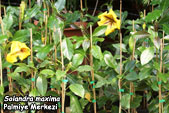 |
|
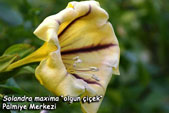 |
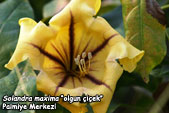 |
PEYZAJDA 4. BOYUT February 2013
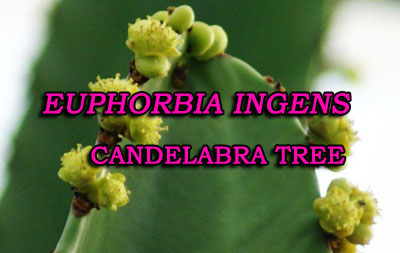 |
PEYZAJDA 4. BOYUT January 2013
|
|
|
The genus Hibiscus belongs to the Malvaceae family which consists of more than 2000 species. It is native to warm temperate, subtropical and tropical regions throughout the world. Ranging from perennial and annual herbaceous plants to woody shrubs and trees. Members of this species are often noted for their showy flowers and are commonly known simply as hibiscus. The family name, Malvaceae, is derived from malva the Latin name for marsh-mallow. The generic name is derived from the Greek word hibiskos, which was the name Dioscorides gave to Althaea officinalis (possibly derived from ibis, a stork, as these birds feed on some species of mallow). Hibiscus pedunculatus is a delicate, lovely, indigenous hibiscus, with bright pink flowers on elegant stalks. Pedunculatus means ‘with a peduncle', an inflorescence stalk, referring to the long flower stalks of this species. Naturaly found in Mozambique and South Africa. Pink Mallow small, elegant, erect, shrubby perennial that grows up to 150-200 cm. The lower part of the shrub is woody and sparsely branched. Slender stems and rough leaves are covered in short hairs. Leaves are mostly 3, sometimes 5 lobed, and have toothed margins. Large, solitary, slightly drooping, pale to dark pink flowers are carried on long peduncles in the axils of the leaves. Hibiscus pedunculatus grows fairly fast and will flower profusely, but flowers lasts a day. The flowering time is often all year round, but mainly from April to November. The fruit is a capsule and the seeds have a cotton-like floss. The pollen of the flowers attracts insect pollinators such as butterflies, also attract sunbirds in tropics. Pink Mallow prefers moist, hot summers. It will not stand heavy frost. In a cold, frosty garden, it might do well a warmer, sheltered spot. It is a relatively fast-growing plant, provided it is planted in fertile, rich and well-drained soil. Enrich the soil with a considerable amount of compost and organic material. Hibiscus pedunculatus may be pruned towards the end of summer. Pink Mallow can be propagated easily by stem cuttings or from seed. The most effective way to propagate this species is by doing it vegetatively. Stem cuttings should be taken, during spring or summer. It does best, planted in full sun but can also tolerate light shade quite well. It needs a moderate amount of water and should be kept well watered during summer. Use in landscape: Hibiscus pedunculatus is an attractive, long-flowering garden ornament which can be planted in groups using 3–9 plants together, or as an informal border. Planted to the middle or back of a mixed shrub or perennial bed it shows itself off best. In this situation its long slender branches allow the flowers to peep out from around and behind other shrubs. It can also be used as a container plant. |
 |
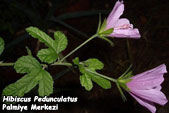 |
|
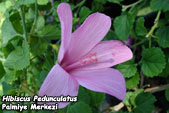 |
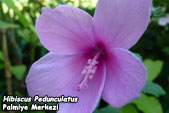 |



